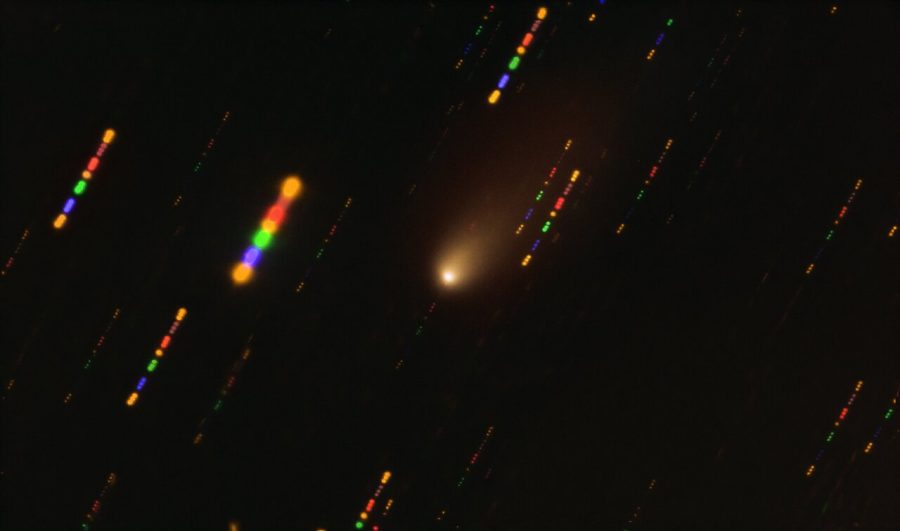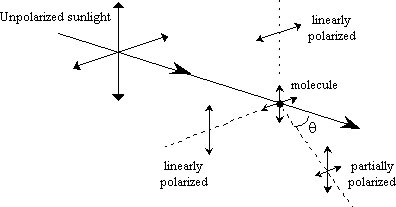New analysis shows that Comet 2I/Borisov, which zipped nearest the Sun in late 2019, was unlike any comet we’ve seen before.

ESO / O. Hainaut
When Comet 2I/Borisov was discovered in 2019, it was the second interstellar object known to fly through the inner solar system in two years. And after the strangeness of 1I/‘Oumuamua, all eyes were on it.
At first, most observations showed that Borisov was exceedingly ordinary, a dark reddish object just like any of the long-period comets that loop in from the outermost reaches of the solar system. But now, two independent teams show that Borisov was actually quite unique — the most pristine sample of a planet-forming system ever observed.
First Encounter
The two teams used techniques that sensed different aspects of the comet, like blind monks touching an elephant.
The first study, in Nature Communications and led by Stefano Bagnulo (Armagh Observatory, UK), measured the light scattered by the coma, the diffuse “atmosphere” of gas and dust around the comet. Photons bouncing off dust grains in the coma will not only change direction (some of them toward Earth), but they’ll also become polarized. The smaller the grains, the more they polarize the light.

Harvard Natural Sciences Lecture Demonstrations
Sunlight scatters off molecules in Earth’s atmosphere in the same way, making Earth’s sky blue. In the case of Comet Borisov, the high degree of polarization suggests the dust grains in the coma are similarly tiny, on the sub-micron scale, says team member Ludmilla Kolokolova (University of Maryland). That’s about the same size as the wavelength of visible light.
This finding makes Comet Borisov unlike any other comet in the solar system except one: Comet Hale-Bopp (C/1995 O1). This brilliant comet was visible to the naked eye for a year and a half, a record that jived with scientists’ assessment that Hale-Bopp had only approached the Sun perhaps once before, around 2000 B.C. Years of observations of “The Great Comet of 1997” confirmed that the dust particles suffusing its coma were smaller than around any other observed comet.
What this means for Borisov is that its encounter with our Sun was the first time it came up close to any star, including its own. It must have originated far out from its host before being ejected into interplanetary space, making our Sun the first to quicken its cometary activity.
Unfortunately, further observations to confirm the small-grain scenario were scuttled due to the COVID-19 pandemic, which shuttered Paranal Observatory from March through August 2020. Operations have restarted in limited mode but it was already too late for the observations Bagnulo had planned. “These data would have been very useful to further characterize the dust particles,” Bagnulo says.
From Dust to Pebbles
Interestingly, a study in Nature Astronomy led by Bin Yang (European Southern Observatory, Chile) finds a result apparently opposite to what Bagnulo’s team observed. Yang and her colleagues measured and modeled the heat the comet radiates, also looking for the size of dust grains within its coma.
The comet is cold — it reached a balmy 200K (–100°F) at perihelion, when it was twice Earth’s distance from the Sun — so these observations were carried out at radio wavelengths using the Atacama Large Millimeter/submillimeter Array in Chile.
This technique is sensitive to large grains rather than small ones, so it’s not unexpected that the team ended up finding “pebbles” larger than a millimeter in size. But while the larger dust grains of solar system comets are fluffier, the pebbles around Comet Borisov are denser than other comets. The researchers suggest that bouncy collisions (rather than destructive ones) in its host system’s protoplanetary disk compacted the grains.
While the two techniques explore opposite aspects of the comet’s dust, they don’t really contradict each other. “If there’s a mix of composition, it wouldn’t be surprising,” Bagnulo says. “We need to combine both data sets to understand what is going on.”
Yang’s team also used observations with the Very Large Telescope’s FORS2 spectrograph, showing that the relative amounts of carbon monoxide and water vapor outgassing from the comet changed drastically as it neared the Sun. The pattern suggests that Borisov, like solar system comets, has layers of material originating from different parts of its home system. Borisov’s home might even have giant planets, since Jupiter and Saturn likely helped mix up materials in our own system.
The fact that we saw Borisov at all, discovered by amateur Gennady Borisov in Crimea, involved a bit of chance. “Imagine how lucky we were that a comet from a system light-years away simply took a trip to our doorstep,” Yang says. But we’re even more fortunate that we have the instruments to decode this messenger from afar, deciphering not only its nature but its origin.
 0
0









Comments
You must be logged in to post a comment.